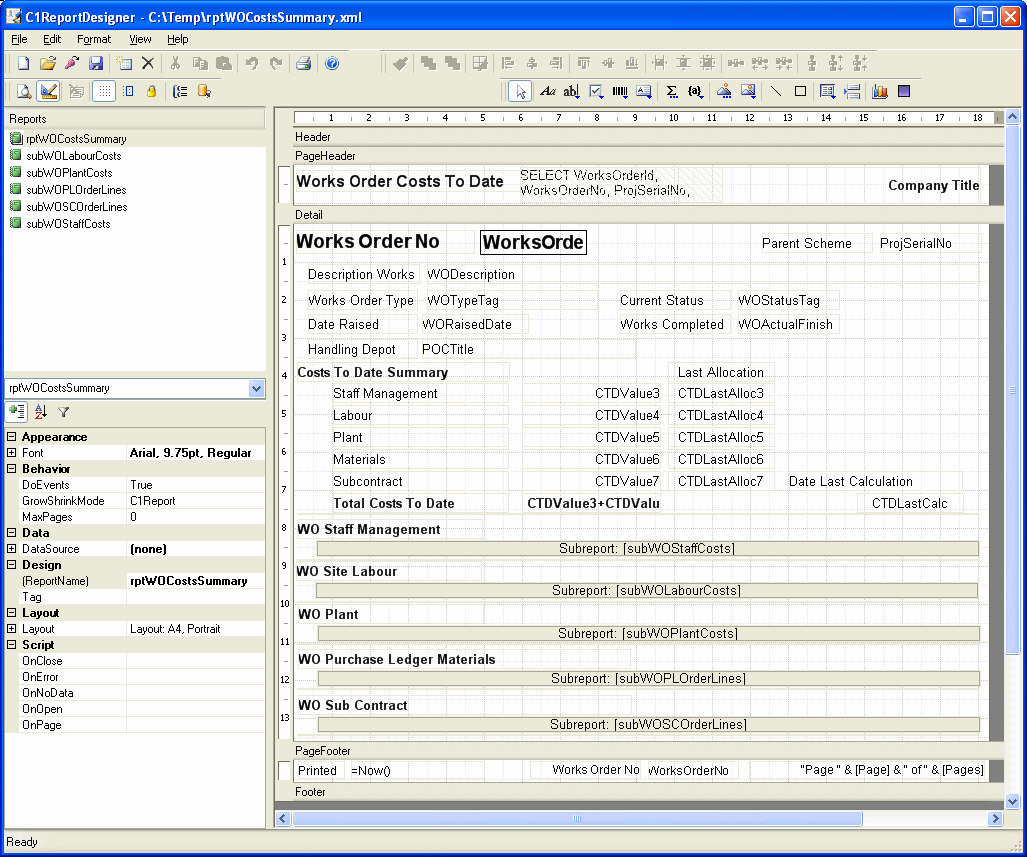
Object Report Formats are stored in XML files, and held in the [HighStone Home]\DocTemplates folder. The usual convention is to start the filename of these files with the prefix "rpt", the file extension is .xml.
These Report Formats are created using the ComponentOne Report Designer (C1RD). This product is best described as a visual Report Designer broadly similar to the Report Designer included in the Microsoft Access application.
Claremont Controls Limited is not permitted to distribute the ComponentOne Report Designer with the HighStone application. If desired Users may purchase their own version of this application and use it to design / alter the report formats.
The C1RD offers a number of key facilities:
New Reports may be built from scratch
It is capable of Importing Report Designs from Microsoft Access application databases (requires Access to be installed)
It is capable of Importing Report Designs from Crystal Reports applications.
Provides an easy and visual tool to create variations of a Report Design by copying elements between existing Report Designs.
Creating Report Formats is invariably fiddly and somewhat time consuming. However, once designed HighStone uses each Report Format through the Component One Report Library functions to create the populated Object Reports.
The following image shows the C1 Report Editor - this defining a Works Order Cost Report.

The following convention is adopted in creating all Report Designs:
Each Report Design is included in a single report definition xml file. Each design will include a single main or parent report layout; it may optionally include one or more sub-reports [to give a nested report design].
The first Report Object in the definition must be the top or parent report design. It must also be named to equal that of the filename that the complete design is saved in (excluding the .xml extension).
Sub Report designs may follow as required.
As C1RD always stores Report Objects in alphabetic named order within the definition, naming must follow a sequence that preserves the required order after saving of the file. Use of the prefix "rpt" for the first Report Object, then "sub" for sub-reports achieves this aim. It is not (normally) necessary to maintain sub-report names in an order consistent with the order in which that are used in the parent report.
The use of Sub Reports within Sub Reports is supported (Nested Reports). However, naming convention must ensure that any Report Object will always appear after it's Parent Report Object after the definition is saved.